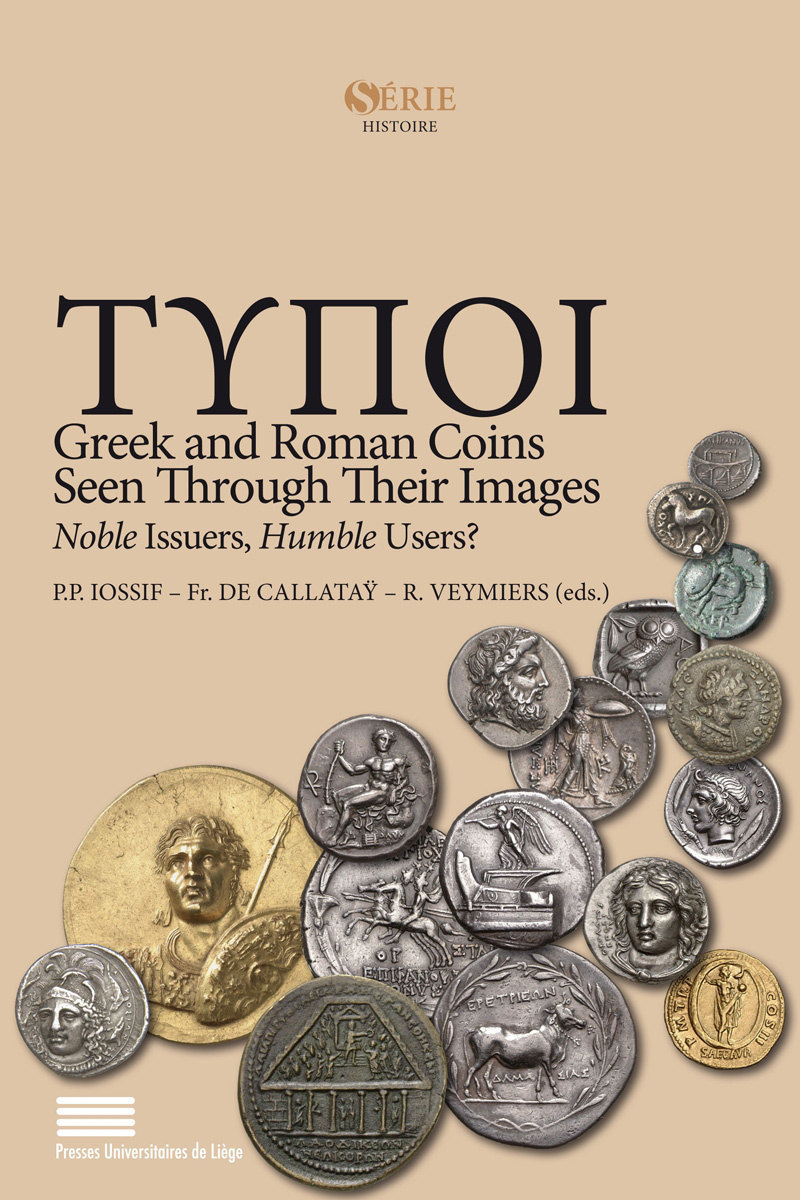Preface
List of abbreviations
Robert Laffineur – Léon Lacroix (1909-2016) : hommage au maître.
Introduction
François de Callataÿ – L'iconographie des monnaies grecques : brève historiographie et présentation des principales problématiques.
The KIKPE Collection
Vasiliki Penna, Yannis Stoyas – Some Rarities from the KIKPE Numismatic Collection.
Image on Coins and Methodological Approaches: A Broader Perspective
Maria Caccamo Caltabiano – Image as Word and Decoding Coin Images. THE LEXICON ICONOGRAPHICUM NUMISMATICAE CLASSICAE ET MEDIAE AETATIS (LIN);
Maria Beatriz Borba Florenzano – In God We Trust. Gods and God-like Entities on Ancient Greek Coins ;
Olivier Picard – Le type monétaire de la cité : pour une lecture institutionnelle.
The World of the Greek Cities: Toward a City of Images
Wolfgang Fischer-Bossert – Imitations and Remodelings of Sicilian Coin Types: Fashion or Politics?
Mariangela Puglisi – Greek Coinages of Sicily: War and Typological Choices;
Selene E. Psoma – From the Odrysian Sparadokos to Olynthus: Remarks on Iconography;
Sergei A. Kovalenko – Monetary Imagery in the Northern Black Sea Littoral: Remote Area, Familiar Trends?
Anne Destrooper-Georgiades – Signification et destinataires des images et légendes monétaires de Marion du Ve au IVe s. av. J.-C.
The World of Hellenistic Kingdoms: Toward Kingdoms of Images
Thomas Faucher – Les types monétaires chez les Lagides ;
Oliver D. Hoover – The Sincerest Form of Flattery: Imitation and Counterfeit Coins in the Seleucid Empire;
Panagiotis P. Iossif – Divine Attributes on Hellenistic Coinages: From noble to humble and Back;
Andrew Meadows – The Great Transformation. Civic Coin Design in the Second Century BC.
The Transition from Hellenistic to Roman: Punic Coinages and Alexander's Image
María Paz García-Bellido, José Ángel Zamora – Codes iconographiques de la monnaie punique en Hispania, avec un appendice épigraphique ;
Karsten Dahmen – King into Legend. Varying Perspectives of Alexander. Issuer and Audiences of Coins Bearing the Image of Alexander the Great.
The World of Rome: Toward A Republic of Images
Bernhard E. Woytekn – The Depth of Knowledge and the Speed of Thought. The Imagery of Roman Republican Coins and the Contemporary Audience ;
Pierre Assenmaker – Monnaies grecques, images romaines : un aperçu des références au pouvoir romain dans les monnayages de Grèce aux IIe-Ier s. av. J.-C.
The World of Imperial Rome: Toward an Empire of Images
Arnaud Suspène – Entre la Grèce et Rome : les traditions iconographiques du monnayage d'Octavien-Auguste ;
Johan van Heesch – Coin Images in Imperial Rome: the Case of the Emperor Nero;
Yannis Stoyas – A passage to Asia: Crossing the Hellespont on Roman Provincial Coin Issues from Abydos.
Coins and Gems: A Fertile Dialogue
Dimitris Plantzos – "For good ye are and bad, and like to coins": Why Bother With Seal-impressions;
Laurent Bricault, Richard Veymiers – Gens isiaque et intailles. L'envers de la médaille.
Index
Plates

